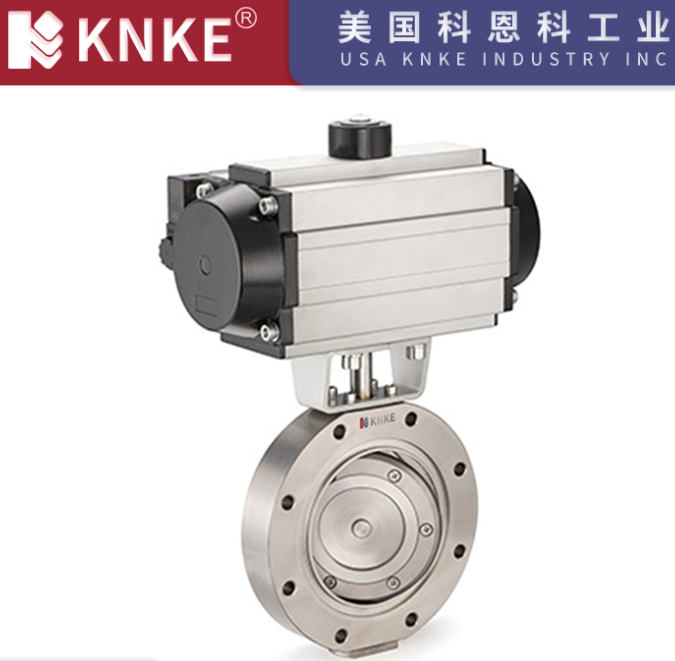Working Principle of Pneumatic Butterfly Valve
Pneumatic butterfly valves are crucial components in various industries, including oil, chemical, power generation, food processing, and pharmaceuticals. These valves are simple to operate, respond quickly, and are easy to maintain. This article explains the working principle, structure, and applications of pneumatic butterfly valves.
Basic Structure of Pneumatic Butterfly Valve
A pneumatic butterfly valve consists of several key components:

- Valve Body: The valve body is typically made from cast iron or stainless steel. It houses a disc-shaped valve plate that regulates fluid flow.
- Valve Plate (Disc): The valve plate controls the flow of fluid. It is a circular disc that rotates inside the valve body. The rotation determines the flow passage’s size, thereby controlling the fluid flow.
- Pneumatic Actuator: This component drives the valve. The actuator uses compressed air to produce mechanical force, which rotates the valve plate.
- Manual Override (Optional): A manual override is available in some valves. It allows for manual operation if the pneumatic system fails.
- Seal Ring: The seal ring fits between the valve plate and the valve body. It prevents leakage and ensures proper sealing.
Working Principle of Pneumatic Butterfly Valve
The valve works by converting pneumatic pressure into mechanical force to rotate the valve plate. Here’s how it functions:
- Pneumatic Actuator Drives the Valve Plate: The actuator receives an air pressure signal from the control system. The pressure moves the actuator, which rotates the valve plate.
- Opening Process: When air pressure is applied to the actuator, the valve plate rotates, opening the flow passage and allowing fluid to pass through.
- Closing Process: When the air pressure reverses, the actuator rotates the valve plate in the opposite direction, closing the valve and stopping fluid flow.
- Flow Control via Valve Plate Rotation: The valve plate can rotate between 0° and 90°. The greater the rotation, the larger the flow opening. The actuator controls the angle of rotation, ensuring precise flow regulation.
- Sealing and Fluid Control: The seal ring ensures that the valve is leak-proof when closed. Pneumatic butterfly valves are known for their excellent sealing performance, even in high-pressure, corrosive, and high-temperature environments.
Advantages of Pneumatic Butterfly Valves
Pneumatic butterfly valves offer several advantages:
- Quick Response: The actuator responds quickly to air pressure changes, making these valves ideal for applications requiring fast operation.
- Simple Structure: Their simple design makes them easy to maintain. They are well-suited for controlling large fluid flows under high pressure.
- Good Sealing Performance: These valves prevent leakage, ensuring the stability and safety of fluid control systems.
- Wide Adaptability: Pneumatic butterfly valves can handle gases, liquids, and particulates. They perform well in harsh environments, such as chemical and oil industries.
Applications of Pneumatic Butterfly Valves
These valves are widely used in various fields:
- Oil and Gas Industry: They regulate fluid flow in pipelines, especially in high-flow and high-pressure systems.
- Chemical Industry: Pneumatic butterfly valves manage the flow of chemicals in manufacturing processes.
- Water Treatment: These valves control flow in water and wastewater treatment plants.
- Food and Pharmaceutical Industries: In these sectors, pneumatic butterfly valves ensure precise fluid transport and maintain hygiene.
- Power Generation: They regulate fluid flow in cooling and steam systems in power plants.
Pneumatic butterfly valves are simple, efficient, and essential for fluid control in various industries. Their working principle, which involves the rotation of a valve plate driven by a pneumatic actuator, allows for accurate flow regulation. As industries continue to automate, pneumatic butterfly valves will remain a key component in many fluid control systems.
